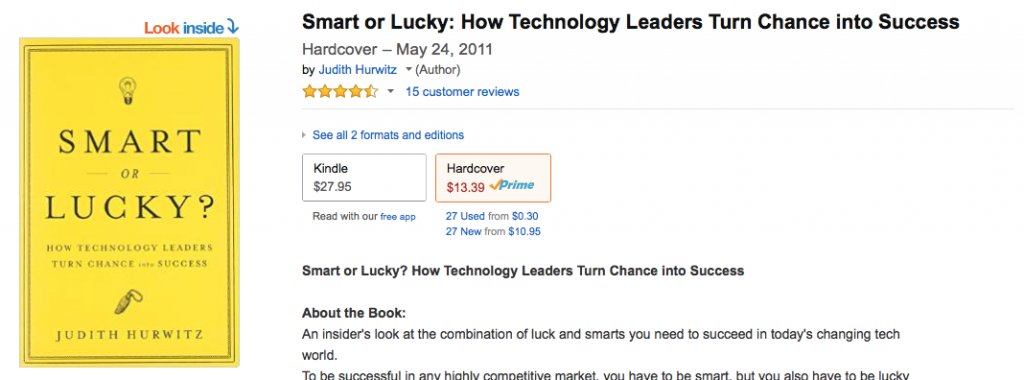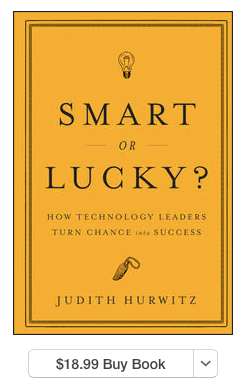Pricing Inversions, or Smart vs. Lucky
Pricing is one of the most important - and mysterious - parts of a business. Price too high, and you lose customers; price too low, and you leave lots of profit on the table. An entire price consulting industry exists, with great leaders like Patrick Campbell of Pricing Intelligently.
One important rule of thumb is that input costs should almost never determine the price of a product.
What your costs do is have two effects:
- Determine the floor price for the product or service. Since you need gross margins to cover fixed costs and make a profit, the price never will be lower than variable costs plus some necessary margin (except for loss-leaders).
- Impact the customer's perception of pricing fairness.
In theory, if the input costs for product A are $5 and those for product B are $1, product A could have a final price of $8 while B has a much higher final price of $12; the cheaper product costs more. In other words, the pricing could be "inverted". It just depends on the supply and demand for those products.
In practice, though, a competitive marketplace drives down those disparities. Sure, I could raise the price of B to make its gross margins twice those of A... but a competitor will see that they could offer product B for lower than A, and still maintain great margins. I either match them or lose my market for B.
Because of that, I always find it interesting when two near substitutes with different input costs have inverted prices.
This morning, I looked for a book recommended by a colleague of mine. I have been lucky over the years in building a network of first-class technologists and businesspeople. Alberto Fernandez is a first-class telco engineer, not only in the actual nuts and bolts of designing, building and running telco-class networks, but also in cutting through red tape. I once saw him get on a plane, fly to an Asian country, and singlehandedly save a large and complex telco deal in 24 hours.
Alberto recommended I read the book "Smart or Lucky" by Judith Hurwitz for some good insights into the successful lucky or smart development of key technology businesses. Unluckily, I misheard him and downloaded "Lucky or Smart" by Bo Peabody, which, luckily, turned out to be a good and quick read with great and humbling insights.
Having finished Bo's book, I went to Amazon to purchase Judith's book for my Kindle app this morning. The first search and link brought me to the hardcover version, with a link to the Kindle version, and some very surprising pricing.
[caption id="attachment_2534" align="alignnone" width="640"] Smart or Lucky - Amazon[/caption]
Smart or Lucky - Amazon[/caption]
The hardcover version, which is the premium version and has a high marginal costs, is only $13.39, while the Kindle version, which has a $0.00 marginal cost, is $27.95, or just over twice the price!
Of course, it is possible that there is much higher demand for the Kindle version, either because the target market is heavily tech-executive focused, almost all of whom have a Kindle device or smartphone/tablet with the Kindle app, or because people realize they need it right now. There is, after all, a premium for instant delivery, if it is worth more to people.
Still, the price differential feels strange. Very few people will pay twice as much for immediate delivery, and the eBook versions are almost always cheaper than the physical versions.
How about the disparity-reducing effect of competition?
Here is the iBooks price:
Hmm, $18.99. It still is somewhat more expensive than Amazon's hardcover price, but much closer to the same price. Barnes & Noble's Nook has it for $15.49. Very few people will pay 2x to have it delivered immediately; plenty will pay an extra $5.00.
If Amazon knew customers had a preference for Kindle over hardcover, or particularly needed instant delivery, they could charge a premium. Of course, with their detailed tracking of customers, they do know what their customer preferences are.
But they would also need to know if their customers prefer to purchase at Amazon over competitors, in this case Apple's iBooks or Barnes & Noble's Nook. They have no way of knowing if I will look in either of those two stores.
But the perception of fair pricing is most important of all. When the clearly lower-cost-to-the-company product (eBook) costs significantly more to the customer, the customer is guaranteed to go looking elsewhere. The customer's natural reaction will be, "the Kindle version costs them less and costs me twice as much?? Let me see what Apple charges." The higher price guarantees comparison shopping. On the other hand, when the price is similar or lower, the customer is far more likely to just "One-Click" buy it.
Summary
Your pricing for products should reflect the differing values of those products to your customers. They should not reflect the underlying costs, except to set a price floor. But always be aware of how your customer perceives the different costs to you. If you don't manage the perceptions correctly, you drive them to your competitors.
Do your products have the right prices for themselves, with regards to each other, and how they manage customer perceptions? Will they drive more purchases... or more time spent looking at competitors?
